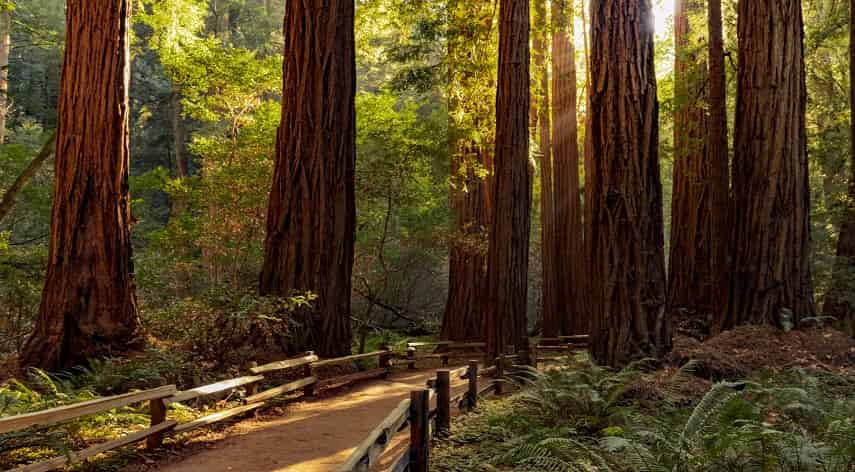How To Go Camping Alone in the Woods (And Enjoy It)

When you think about camping, you probably don’t picture yourself going camping alone.
It might be a little scary at first to go camping alone, but you shouldn’t let your fears keep you from enjoying the outdoors. With the right preparations, you can have just as much fun camping on your own as any camper would, even if you feel like you’ll be missing out on a group experience.
Not sure how to go about planning your camping alone in the woods? Luckily, we’ve got our list of camping basics to help you out.
Keep reading to learn more!
Table of Contents
ToggleChoose the Ideal Location
Look for a safe, isolated spot that is easy to access but gives enough distance from the general public. Try to pick a spot known for its incredible wildlife or vast landscapes. Take into account the elevation and terrain you’ll be encountering.
It’s best to stay away from known trails, especially if it’s your first time camping solo. Know the local regulations and check the weather forecast to ensure you’re prepared for the conditions. Factor in your ability level, your camping skills, as well as the availability of amenities like water and fire pits.
Set realistic expectations while making sure you’re properly supplied and have a plan in case of an emergency. It should also have access to good resources and amenities and nearby fishing spots, to facilitate an enjoyable and safe camping experience.
Additionally, a variety of camping sites should be considered, such as riverfront sites, mountain sites, and deep forest sites, to find the perfect spot for camping alone in the woods. Pitching camp in a 20sqm clear area is also suggested to ensure plenty of space for activities. With the right location, you’ll have the ideal setting for a unique and safe solo camping adventure.
Gather the Right Equipment
Depending on the season, camping in the woods can range from mildly pleasant to life-threatening. The basics are a tent and a sleeping bag, but a camp stove, first-aid kit, rain and camping gear, personal hygiene items, flashlights, a camping lantern, and a toolbox will also be necessary. Additional items like a compass, map, laptop for entertainment, and a fire starter will be critical.
While some of these items will come in handy regardless of the season, others will depend on the weather. Purchasing quality items from trusted retailers is paramount; if the equipment does not perform well and does not serve its intended purpose, then the experience stands to become dangerous.
Utilize Safety and Survival Techniques
Always let a trusted contact or family member know when you’re leaving and when you plan to be back. Familiarize yourself with safety and survival techniques used in the outdoors, such as utilizing a fire pit to stay warm, finding clean and safe sources of water and shelter, and practicing basic first-aid.
Additionally, stay aware of your surroundings and familiarize yourself with local wildlife and potential dangers. If you are feeling uncomfortable or unsafe, always remain calm and find a way to get out safely.
Train Your Mind to Embrace Solitude
Start by committing to a single day of camping alone in the woods. During your time, focus on being completely present, tune into your surroundings, and eschew worldly distractions. Take time to breathe and honor your sense of stillness. Practice mindfulness by focusing inward and becoming aware of your own emotions and thoughts.
When you start feeling anxious or vulnerable, remind yourself that anxiety is a natural emotion and take slow, deep breaths until you gain mental clarity. Notice the beauty in your surroundings and focus on finding appreciation and gratitude at the moment. After repeated practice in embracing solitude, the comfort will become easier and you’ll be able to create memorable experiences when alone in the woods.
Design a Relaxing Routine and Set Goals
For starters, plan out the timeline of the day. Try to have an enjoyable routine with physical activities and activities that require less energy. Pack your camping supplies and plenty of snacks or food supplies.
Then, plan out the goals you want to accomplish while camping in the woods. If you are going camping alone, these goals should be realistic and attainable.
For example, you could select a hiking trail to take that day or set a goal of exploring new areas or taking photos of wildlife. Finally, planning out a relaxing routine and setting goals can also help you stay organized during your camping experience and prevent any unneeded stress or wasted energy.
Understand the Risks of Camping Alone
Camping alone in the woods can be a scary and potentially dangerous experience. There are several risks associated with the activity, such as the possibility of wild animals, getting lost, or falling ill. Wild animals may pose a real threat, as they may attack unsuspecting campers in search of food or other resources.
If a camper gets lost, they may become easily disoriented, and the only way to get help could be to walk, which can be dangerous in remote areas of the woods. In addition, the camper may be exposed to sudden changes in weather, or even intense sunlight, which can lead to heat stroke.
Plus, camping alone makes a person vulnerable to criminals or people with ill intentions. To stay safe, it is important to choose a remote location that is as far away as possible from any signs of civilization and take precautions such as avoiding hiking alone and telling a friend or family member where you plan to stay.
Embrace the Freedom of Being Alone in the Woods
Camping alone in the woods can be a great way to meet your true self. You can explore to your heart’s content and enjoy the peace and serenity of nature.
Just remember to be safe first and take the necessary precautions before you go out. Start by going camping in exploration areas until you become more experienced. So, set aside your worries, gather your essential gear, and hit the trails solo – you won’t regret it!
Don’t stop getting educated on a variety of topics now. For more cool tips, check out this blog now.
Rick Garnar is a dynamic Travel and Tourism Executive with a passion for creating unforgettable experiences. With a wealth of industry expertise, he excels in developing strategic initiatives that enhance customer satisfaction and drive business growth. Rick's innovative approach and leadership have contributed to the success of numerous travel ventures, making him a respected figure in the industry. His commitment to excellence and customer-centric focus set him apart as a visionary leader in the world of travel and tourism.
Recommended For You
Spread the loveIntroduction Tourism is a multi-trillion-dollar industry, and the concept of a tourism network plays a vital role in
Spread the loveLooking to book a memorable date with your significant other? Consider taking a stylish couples vacation. You’ll find a variety of
Spread the loveWhen it comes to indulging in the lap of luxury, there is nothing quite like staying at a





